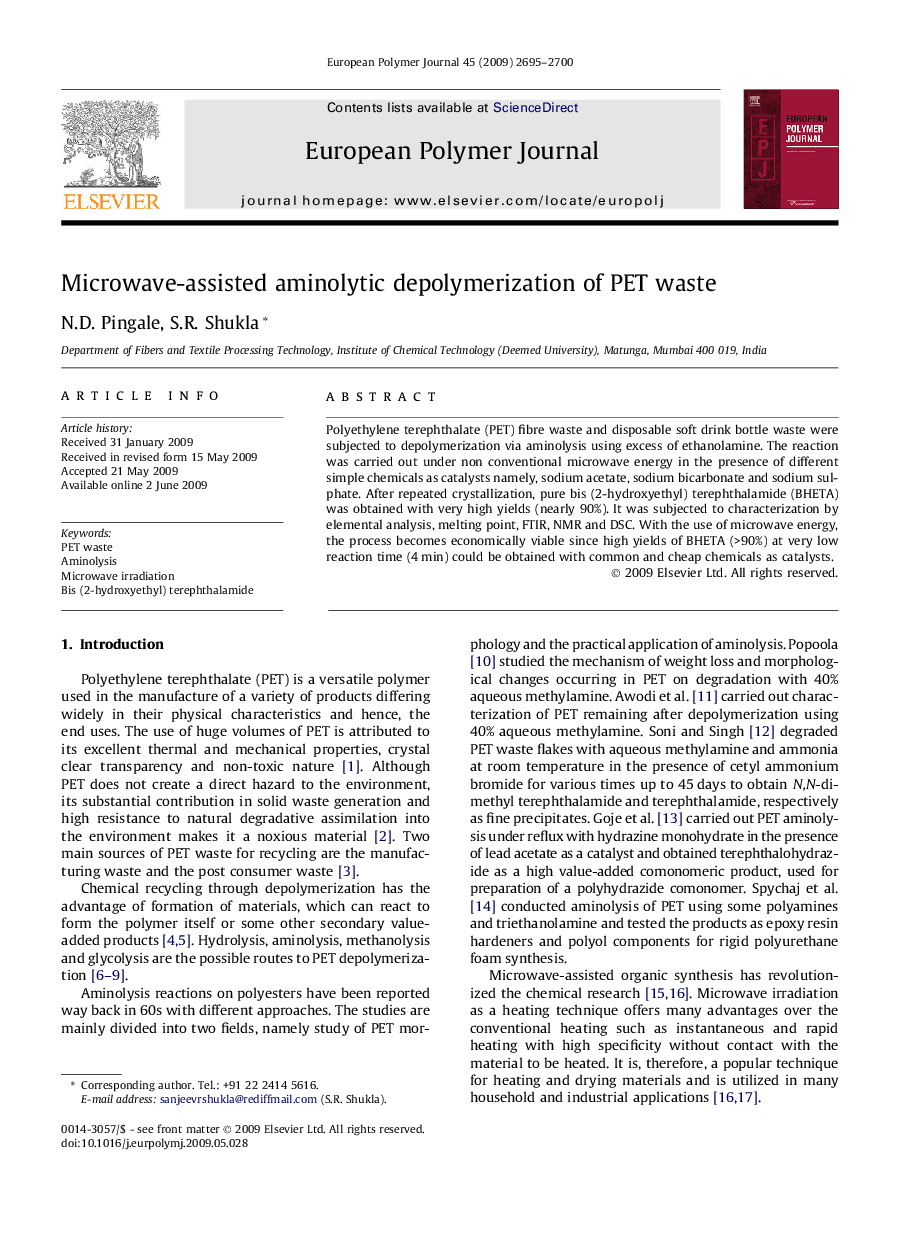| Article ID | Journal | Published Year | Pages | File Type |
|---|---|---|---|---|
| 1400765 | European Polymer Journal | 2009 | 6 Pages |
Polyethylene terephthalate (PET) fibre waste and disposable soft drink bottle waste were subjected to depolymerization via aminolysis using excess of ethanolamine. The reaction was carried out under non conventional microwave energy in the presence of different simple chemicals as catalysts namely, sodium acetate, sodium bicarbonate and sodium sulphate. After repeated crystallization, pure bis (2-hydroxyethyl) terephthalamide (BHETA) was obtained with very high yields (nearly 90%). It was subjected to characterization by elemental analysis, melting point, FTIR, NMR and DSC. With the use of microwave energy, the process becomes economically viable since high yields of BHETA (>90%) at very low reaction time (4 min) could be obtained with common and cheap chemicals as catalysts.
Graphical abstractFigure optionsDownload full-size imageDownload as PowerPoint slide
